当前位置:网站首页>Li Kou brush question diary /day3/2022.6.25
Li Kou brush question diary /day3/2022.6.25
2022-07-04 18:35:00 【Bobo toilet cleaning spirit】
Novice Village
C Language understanding
Related concepts of linked list
One by one data in logical structure , In actual storage , Did not like The order sheet That's also close to each other . On the contrary , The data is randomly distributed in memory , This storage structure is called The linear table Chained storage
Because of distributed storage , In order to reflect the logical relationship between data elements , Each data element is stored at the same time , It should be equipped with a pointer , Used to point to its immediate successor , That is, each data element points to the next data element ( The last one points to NULL( empty ))

A table generated by the chain storage structure of a linear table , Referred to as “ Linked list ”.
The data element in the linked list consists of two parts , Data fields and pointer fields
The storage structure of each data element is called a node , Nodes are linked to each other through pointer fields , Form a chain

If each node contains only one pointer field , Then this linked list is called linear linked list or single linked list
The realization of linked list
The linked list does not store basic data types , You need to use a struct to implement custom
typedef struct Link{
char elem;// Represents a data field
struct Link * next;// Represents a pointer field , Point to the immediate successor element
}link;understand :
typedef The function is used to establish the alias of a defined data type .
In the form of :typedef There is already a variable name Alias ;
Generally speaking, it is to give another name to the existing data type

The above uses typedef function , take struct Link There is already a variable name and another name is link, The two are equivalent
Here is the second way to write :

The first line of the statement ,Node and struct Node Equivalent ,
In the second line ,struct Node* Is the existing variable name ,LinkList Alias
summary :
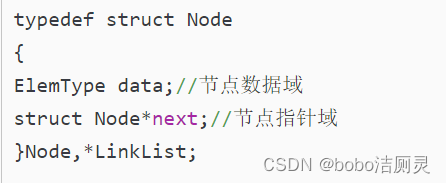
struct Node Equivalent to Node
struct Node* Equivalent to LinkList
Node The object of is structure
LinkList The object of is pointer field
LinkList L // Define a pointer variable to the structure L
Node *P Equivalent to LinkList L //Node* Can replace LinkList
**P Pointer value operation
summary 2:
Suppose we define a pointer p.
Then three symbols are often used :
1,p;
2,*p;
3,&p;
Beginners often feel confused , What do these three symbols mean ?
p Is the name of a pointer variable , Indicates the memory address pointed to by this pointer variable , If you use %p To output , It will be a 16 Hexadecimal number .
*p Indicates the contents stored in the memory address pointed to by this pointer , Generally, it is a variable or constant consistent with the pointer type . And we know that ,& Is the address operator ,&p It's just a pointer p The address of .
p The content in the address pointed to is used *p Express .
*p and **p The difference between
int *p : First level pointer , Express p The address pointed to is a int Type value
int **p : The secondary pointer , Express p What is stored in the address pointed to is a point to int Pointer to type ( namely p In the address pointed to, there is a point to int The first level pointer of )
for example :
int i=10; // An integer variable is defined
int *p=&i; // Defines a pointer to this variable
int **p1=&p; // Defines a secondary pointer to p The pointer
Then take out 10 The value method of is :
printf(“i=[%d]\n”,*p);
printf(“i=[%d]\n”,**p1);
Three knowledge points
Head node , The head pointer , Primary node
Head node : Sometimes , An additional node will be added before the first node of the list , The data field of a node generally does not store data ( In some cases, you can also store the length of the linked list and other information ), This node is called the head node .
If the pointer field of the header node is empty (NULL), Indicates that the list is empty . The head node is for the list , It's not necessary , When dealing with certain problems , Adding a head node to a linked list makes the problem simple .
First element node : The node of the first element in the list , It is the first node behind the head node .
The head pointer : Always point to the location of the first node in the list ( If the list has head nodes , The head pointer points to the head node ; otherwise , The head pointer points to the head node ).
The difference between head node and head pointer : The head pointer is a pointer , The head pointer points to the head node or the first element node of the linked list ; The head node is an actual node , It contains data fields and pointer fields . The direct embodiment of the two in the procedure is : The header pointer only declares and does not allocate storage space , The header node declares and allocates the actual physical memory of a node .
There can be no head nodes in a single chain table , But not without a head pointer !
Creation of linked list , lookup , add to , Delete (C Language )
Everything is difficult at the beginning , The first thing to do to initialize the linked list is Create the head node or first element node of the linked list . While creating , Make sure that a pointer always points to the header of the linked list , In this way, the linked list will not be lost .
// Creation of linked list
link * initLink(){
link * p=(link*)malloc(sizeof(link));// Create a header node
link * temp=p;// Declare a pointer to the head node , Used to traverse a linked list
// Generate linked list
for (int i=1; i<5; i++) {
link *a=(link*)malloc(sizeof(link));
a->elem=i;
a->next=NULL;
temp->next=a;
temp=temp->next;
}
return p;
}
// Query of nodes
int selectElem(link * p,int elem){
link * t=p;
int i=1;
while (t->next) {
t=t->next;
if (t->elem==elem) {
return i;
}
i++;
}
return -1;
}
// Change the value of a node , Update function , among ,add Indicates to change the position of the node in the linked list ,newElem For the value of the new data field
link *amendElem(link * p,int add,int newElem){
link * temp=p;
temp=temp->next;// Before traversing ,temp Point to the initial node
// Traverse to the deleted node
for (int i=1; i<add; i++) {
temp=temp->next;
}
temp->elem=newElem;
return p;
}
// Insertion of linked list , Realize the idea
// Will the new node of next The pointer points to the node after the insertion position ; The node before the insertion position next The pointer points to the insertion node ;
link * insertElem(link * p,int elem,int add){
link * temp=p;// Create a temporary node temp
// First find the previous node where you want to insert
for (int i=1; i<add; i++) {
if (temp==NULL) {
printf(" Invalid insertion position \n");
return p;
}
temp=temp->next;
}
// Create insert node c
link * c=(link*)malloc(sizeof(link));
c->elem=elem;
// Insert nodes into the linked list
c->next=temp->next;
temp->next=c;
return p;
}
// Delete node , Realize the idea
// Remove the node from the linked list ; Release node manually , Reclaim the memory space occupied by the node ;
link * delElem(link * p,int add){
link * temp=p;
//temp Point to the previous node of the deleted node
for (int i=1; i<add; i++) {
temp=temp->next;
}
link * del=temp->next;// Set a pointer to the deleted node separately , In case of loss
temp->next=temp->next->next;// The way to delete a node is to change the pointer field of the previous node
free(del);// Release the node manually , Prevent memory leaks
return p;
}
Use malloc Function application space , Be sure to pay attention to manual free fall . Otherwise, in the whole process of running the program , The requested memory space will not be released by itself ( Only when the whole program is finished , This memory will be recycled ), Memory leak , Don't think of it as a small problem
understand
java in LinkedList Corresponding linked list
Example

Their thinking :
With two Pointers , Traversing a single linked list , The fast pointer traverses two nodes at a time , The slow pointer traverses one node at a time , When the fast pointer traverses the linked list , The slow pointer just traverses to the middle
class Solution {
public ListNode middleNode(ListNode head) {
ListNode fast=head,slow=head;
while(fast!=null && fast.next!=null){
slow=slow.next;
fast=fast.next.next;
}
return slow;
}
}
边栏推荐
- Pytoch deep learning environment construction
- 一直以为做报表只能用EXCEL和PPT,直到我看到了这套模板(附模板)
- 12 - explore the underlying principles of IOS | runtime [isa details, class structure, method cache | t]
- 【云端心声 建议征集】云商店焕新升级:提有效建议,赢海量码豆、华为AI音箱2!
- uni-app与uviewUI实现仿小米商城app(附源码)
- I wrote a learning and practice tutorial for beginners!
- [daily question] 556 Next bigger element III
- 力扣刷题日记/day2/2022.6.24
- The money circle boss, who is richer than Li Ka Shing, has just bought a building in Saudi Arabia
- How to improve development quality
猜你喜欢
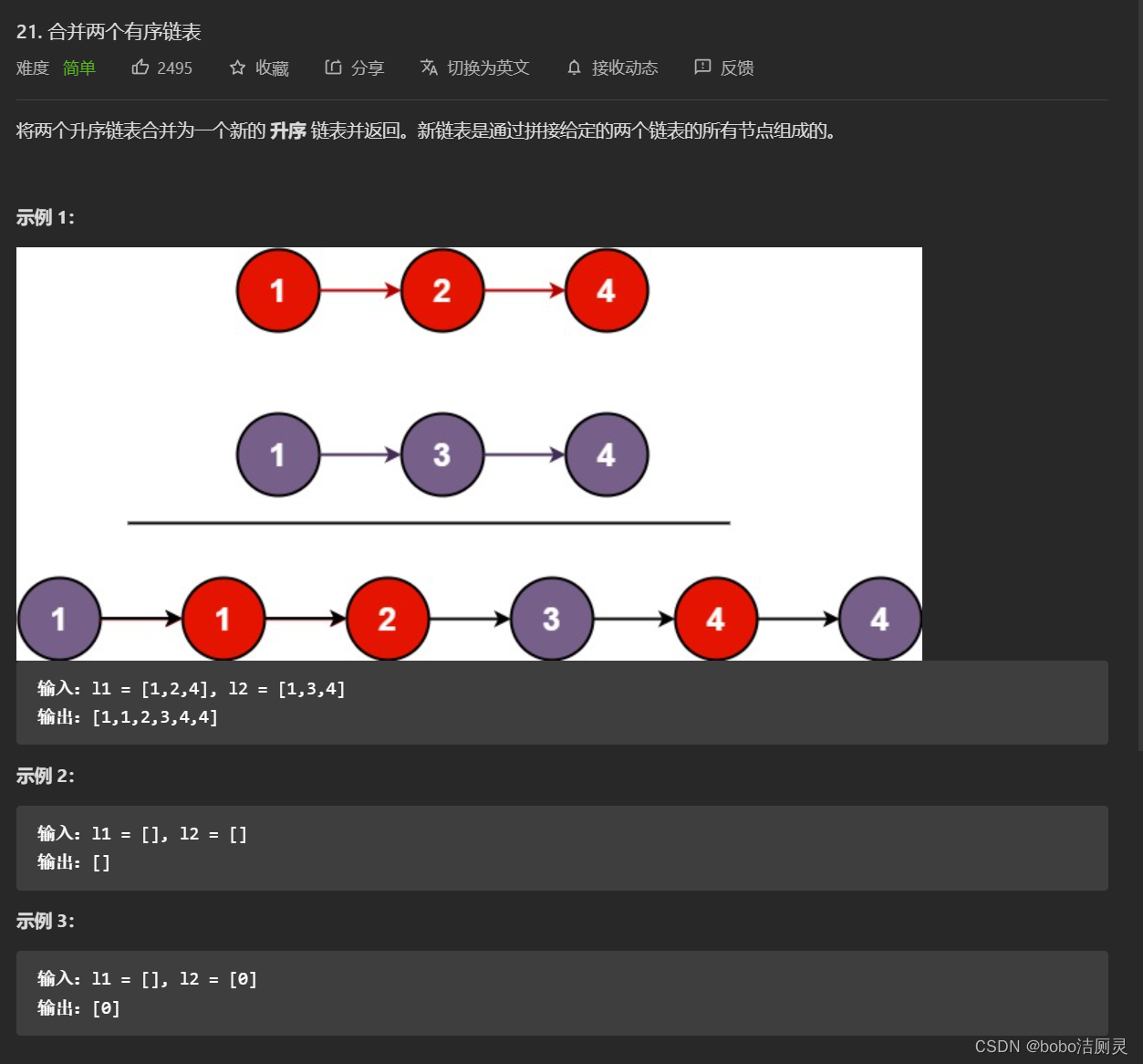
力扣刷题日记/day7/2022.6.29

I always thought that excel and PPT could only be used for making statements until I saw this set of templates (attached)
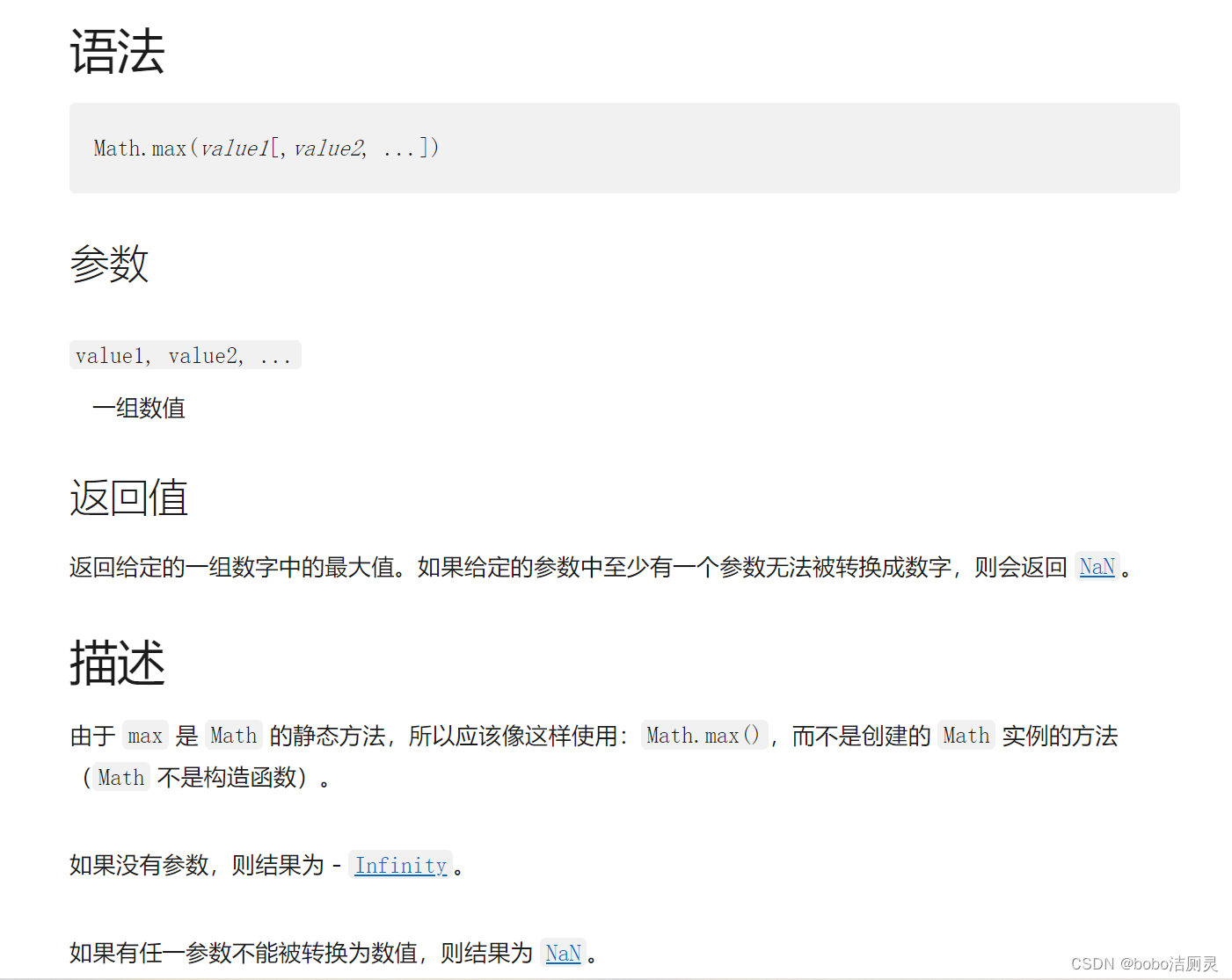
力扣刷题日记/day5/2022.6.27
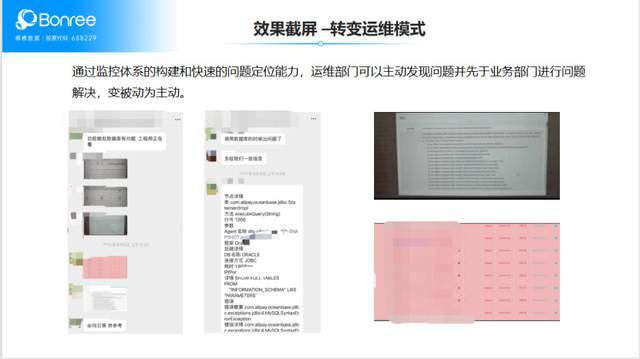
能源行业的数字化“新”运维
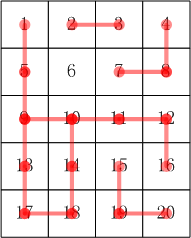
Blue bridge: sympodial plant
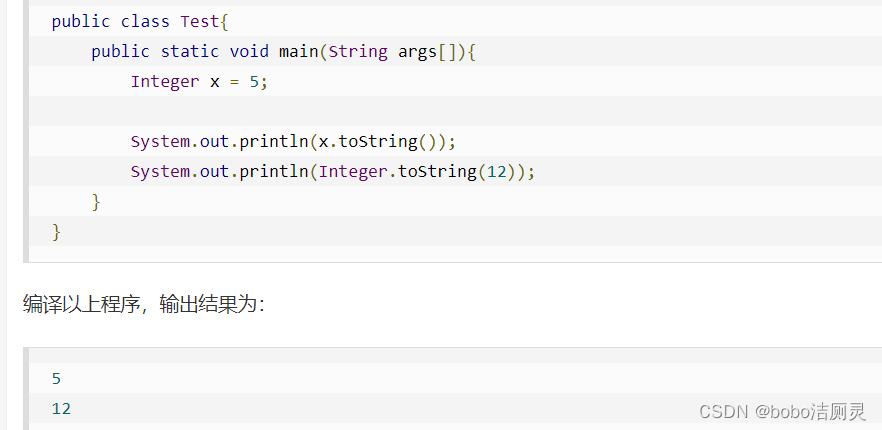
力扣刷题日记/day2/2022.6.24
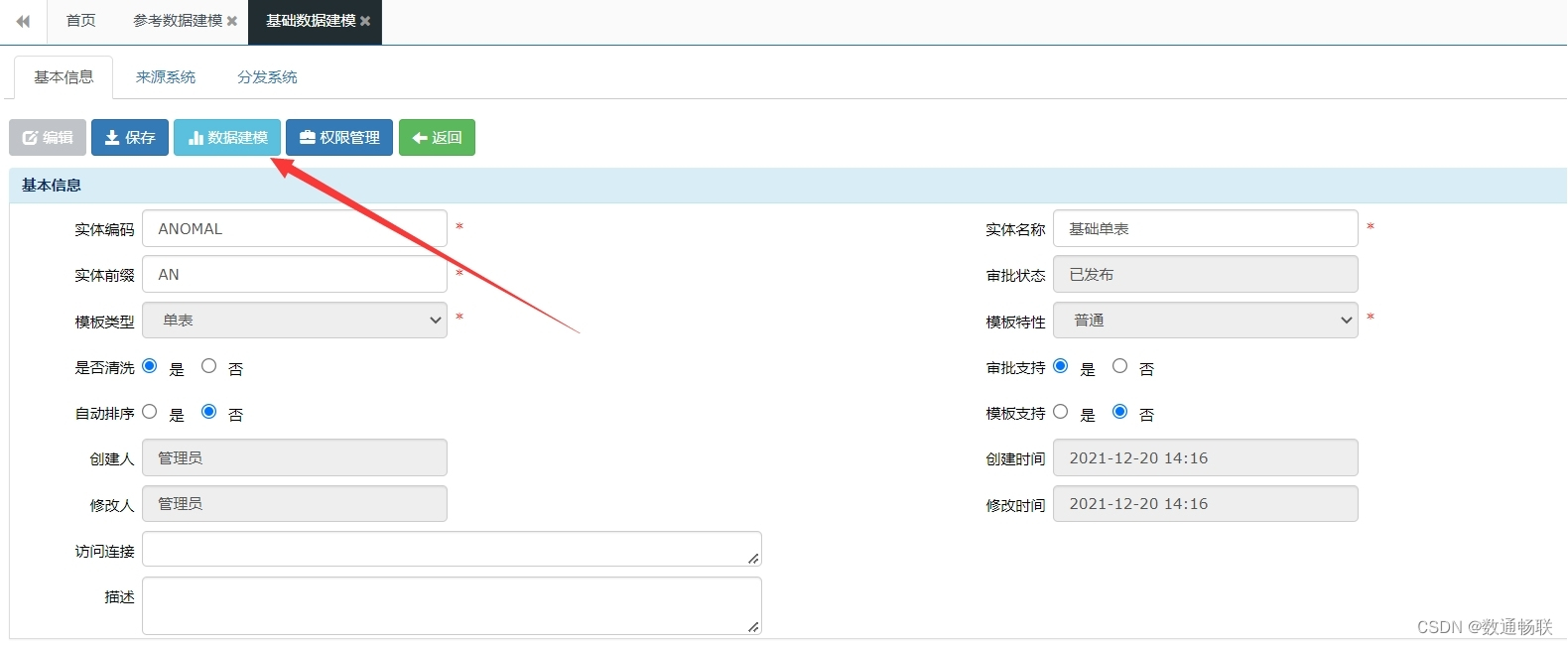
How to test MDM products
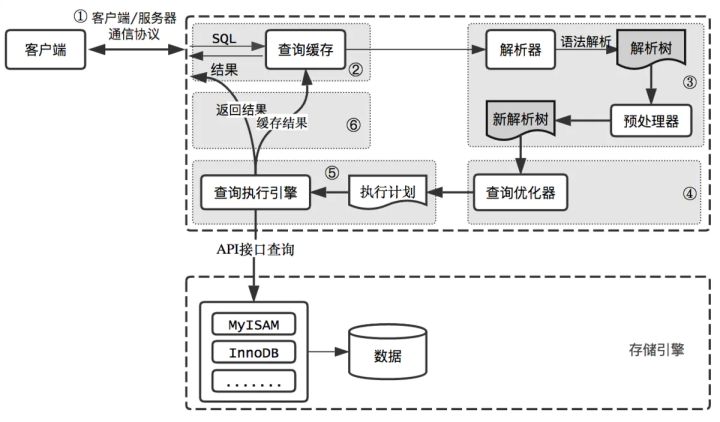
输入的查询SQL语句,是如何执行的?
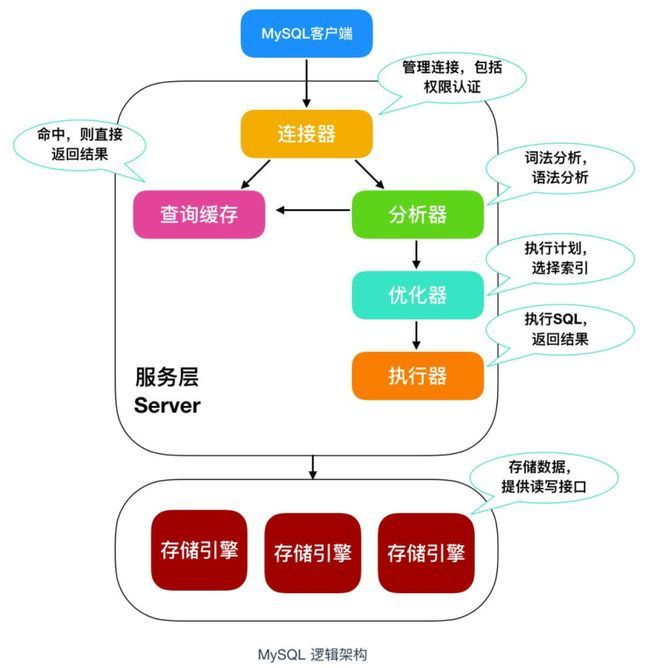
How is the entered query SQL statement executed?

celebrate! Kelan sundb and Zhongchuang software complete the compatibility adaptation of seven products
随机推荐
力扣刷题日记/day4/6.26
2022年DCMM认证全国各地补贴政策汇总
Load test practice of pingcode performance test
Self reflection of a small VC after two years of entrepreneurship
fopen、fread、fwrite、fseek 的文件处理示例
Neglected problem: test environment configuration management
力扣刷题日记/day8/7.1
Interview summary of large factory Daquan II
With the stock price plummeting and the market value shrinking, Naixue launched a virtual stock, which was deeply in dispute
Li Kou brush question diary /day8/7.1
华为云ModelArts的使用教程(附详细图解)
How to improve development quality
"In Vietnam, money is like lying on the street"
【Hot100】31. Next spread
General environmental instructions for the project
删除二叉搜索树中的节点附图详解
12 - explore the underlying principles of IOS | runtime [isa details, class structure, method cache | t]
[209] go language learning ideas
android使用SQLiteOpenHelper闪退
[211] go handles the detailed documents of Excel library